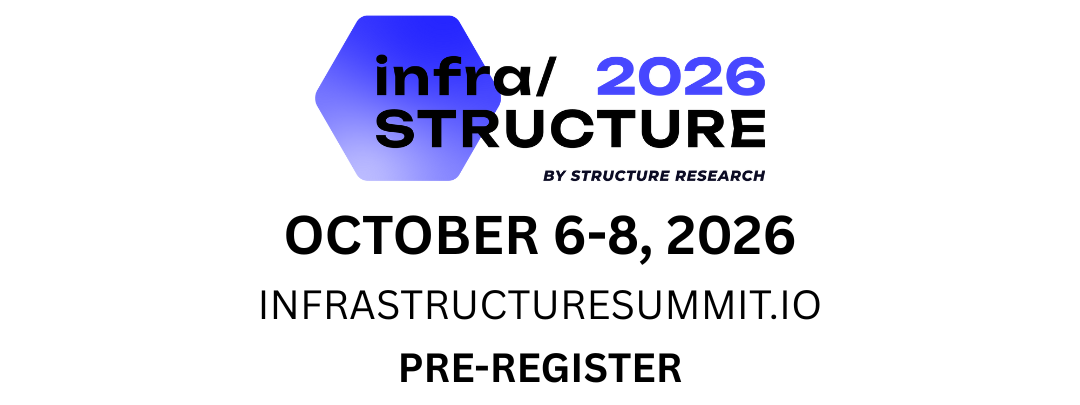Singapore government to release another 300MW of data centre capacity; industry implications, demand impact
Summary: The Singapore government, through its Infocomm Media Development Authority (IMDA) arm, unveiled plans to release at least another 300MW of additional data centre capacity through a new initiative called the ‘Green Data Centre Roadmap’.
Details: The stipulation surrounding this new data centre capacity allocation will be centred around what the government terms ‘green energy deployments’ which it hopes will lead to ‘innovative ways to accelerate energy efficiency, as well as seed hybrid ways to unlock further capacity through green energy’ across two main fronts:
- Accelerate the data centre’s energy efficiency at hardware and software levels, and allow industry and end users to put in place best-in-class technologies to maximise energy efficiency, capacity and economic potential.
- Accelerate data centre’s use of green energy to expand capacity and explore ways to deploy this at scale.
Further details: More specifically the Singapore government has laid out pathways to achieve this by:
- Designing and operating energy-efficient facilities: data centre operators working with equipment suppliers and solutions providers to ensure their facilities are configured and operated in an energy-efficient manner.
- Deploying energy-efficient compute/IT hardware equipment and using the software stack efficiently: data centre operators to ‘nudge’ end-users on adopting or refreshing compute/IT equipment to the best-in-class energy-efficient hardware. This includes working with the software ecosystem, to ensure that the overall design is optimised across the stack.
- Delivering green energy sources: data centre operators and green energy suppliers forging partnerships to create a virtuous cycle of demand and supply for green energy.
- Driving innovation to push boundaries further: data centre operators working closely with academia to innovate in areas such as cooling technologies, green computing and low-carbon energy.
Importance of data centre operators: The roadmap specifically acknowledges the role of data centre operators as ‘important catalysts for key partnerships — to bring together green efficiency and green energy solutioning partners to realise the broader goals of sustainable development’. The roadmap also notes that the data centre ecosystem is ‘multi-faceted, and will facilitate an ecosystem view. The room for growth can be enlarged when key catalysts bring partners on board, and everyone in the ecosystem plays a role’. This includes supporting industry partnerships in delivering low-carbon energy sources. The green energy sources will initially comprise of bioenergy, fuel cells with carbon capture, low-carbon hydrogen and ammonia, and vertical building-integrated photovoltaics/building-applied photovoltaics.
Data centre PUE and WUE as the anchor metric for efficiency: The Singapore government specified that it expects new data centres built in Singapore to achieve a PUE of ≤1.3 at 100% IT load. Notably, for existing data centres, the government is giving a 10-year timeline for older facilities to perform upgrades such that it also meets the standard ≤1.3 PUE at 100% IT load. IMDA laid out several suggestions for achieving the PUE standard that include:
- Upgrading M&E equipment
- Apply tropical data centre methodology – essentially raising server hall operating temperatures (something that Equinix has done across its footprint)
- Incorporating various types of cooling configurations relative to the type of workloads being supported such as:
- Rear door heat exchangers – passive/active heat exchangers replace the rear door of the compute/IT equipment rack with an air-to-liquid heat exchanger. This solution can be retrofitted to existing server racks and no changes are required to standard compute/IT equipment, which significantly eases the implementation.
- Direct to chip cooling – cold plates sit atop the board’s heat-generating components (Central Processing Units (CPUs), Graphics Processing Units (GPUs), memory modules) to remove the heat through liquid-filled cold plates. It offers highly efficient cooling at the source but requires some residual air-cooling and modifications to the compute/IT equipment hardware.
- Immersion cooling – servers and other components in the rack are submerged in a thermally conductive dielectric liquid or fluid. This approach is most energy-efficient as it eliminates the need for air-cooling, but requires specialised compute/IT equipment and facilities (horizontal immersion tank instead of vertical server rack).
- Rear door heat exchangers – passive/active heat exchangers replace the rear door of the compute/IT equipment rack with an air-to-liquid heat exchanger. This solution can be retrofitted to existing server racks and no changes are required to standard compute/IT equipment, which significantly eases the implementation.
- Direct to chip cooling – cold plates sit atop the board’s heat-generating components (Central Processing Units (CPUs), Graphics Processing Units (GPUs), memory modules) to remove the heat through liquid-filled cold plates. It offers highly efficient cooling at the source but requires some residual air-cooling and modifications to the compute/IT equipment hardware.
- Immersion cooling – servers and other components in the rack are submerged in a thermally conductive dielectric liquid or fluid. This approach is most energy-efficient as it eliminates the need for air-cooling, but requires specialised compute/IT equipment and facilities (horizontal immersion tank instead of vertical server rack).
- Deploy smart energy optimisation tools – essentially AI-enabled DCIM to track operating conditions in real time and use AI capabilities such as ‘digital twins’ to dynamically control and optimise M&E systems for energy efficiency.
- Digital twins can integrate real-time data on power consumption, temperature, and airflow, to provide a comprehensive view of a facility’s energy usage, assess the status of the components, forecast potential issues, and run scenarios without disrupting the actual infrastructure. Operations managers can use this information to identify and rectify areas of inefficiency (e.g. under-utilised server racks or over-cooled spaces), ensuring high reliability and minimal downtime
WUE: For WUE, it expects new and existing DCs to achieve a WUE of 2.0 m3/ MWh or lower over the next 10 years primarily through optimising the water consumption of cooling towers. The government appears to be placing a greater emphasis on PUE vs WUE since the industry has only recently begun to explore ways to optimize water usage.
What was not mentioned: There were no details yet about how the 300MW that will be allocated for data centre development. Presumably there will be a detailed ‘bid’ process as we saw with the release of the last 80MW tranche released in 2022. Hyperscalers and operators with global footprints should again be well positioned given their ability to deliver green data centres and the positive impact on the Singaporean economy.
Connectivity: The government also recognizes the need to build upon the strategic connectivity position of Singapore by ‘doubling the number of submarine-cable landings over the next 10 years’. The Singapore government has rightly realized that it is its international connectivity hub position that is ultimately driving demand for data centre capacity. While it is an ambitious goal and benefits Singapore directly, this is one initiative we believe would not be in the best interest of the region nor the Internet infrastructure sector as a whole. Singapore is already home to the largest ecosystem of submarine cables in the APAC region. Doubling down on more submarine cables landing in Singapore would create a risky bottleneck scenario for both the sector and region. A catastrophic black swan event impacting Singapore in a negative way could mean that a meaningful portion of international data traffic in the APAC would go dark and have disastrous ripple effects across the region. This could have the potential to severely cripple economies from a single event as evidenced from the recent data centre outages in South Korea from Kakao and NAVER causing the entire Korean economy to be brought to a standstill with transaction, payments, e-commerce and even transportation unable to function. Perhaps the healthier way to create a more resilient digital infrastructure architecture for the APAC region would be to further distribute submarine cable systems to land in other emerging and developing markets. This would help to alleviate the capacity constraints in these tier 1 markets (such as Singapore, Hong Kong and Tokyo) and provide a more decentralized (and therefore more resilient) landscape where data centres can be deployed in other emerging markets across ASEAN and the APAC region.
Implications to Johor and Batam markets: The government explicitly noted that ‘there will also be continued emphasis on enabling cross-border data flows, through its Digital Economy agreements and work on harmonising international rules and norms’. This shows that it recognizes the roles of proximate markets such as Johor and Batam as an important piece in the overall ecosystem approach and essentially gives the green light for free-flowing connectivity between Johor/Batam with the ability to tap into the connectivity ecosystem within Singapore. While this is also a two-way street, it would also be in the best interests of both the Malaysian and Indonesian governments to support and further enable this in their respective markets. This essentially reinforces the green light status for both data centre operators and hyperscalers to continue investing in these proximate Singapore markets moving forward.
Future initiatives:
- The Singapore government shared that is would be refreshing the Green Mark Data Centre standard by end-2024 (in partnership with BCA) to raise the standards for energy efficiency in DCs.
- It will also be introducing compute/IT equipment energy efficiency and liquid cooling standards by 2025 to facilitate adoption.
Angle: The Singaporean government’s approach to data centre development is becoming clearer. While new builds and expansions were shut down during the moratorium between 2019-22, it has now opened up a total of nearly 380MW of capacity for development. But the regulatory framework will be strict and there will need to be a strong focus on sustainability, which remains the top priority. This does not just apply to new developments, but the continued operation of data centres. As noted above, the Singaporean government is pushing the entire industry to get greener and legacy facilities will have to be brought up to standard over time. Limiting data centre development is part of a larger strategy aimed at implementing sustainability initiatives, and seeing the foundation for a public-private and industry-wide collaboration and partnership to that end. One of the biggest questions coming out of this development: how will the new tranche impact demand? 300MW is 300MW, and not a drop in the bucket, but it is still not enough to divert the current market trajectory off its course and make Singapore a data centre market hotspot the way it has been in the past. Even if more capacity is aded, which has been reported in media outlets (possibly adding another 200MW), it still will not move the needle. And it will likely be the same small group of companies winning the bids for these tranches. As a result, capital and development activity will continue to flow into neighbouring markets where builds are in the dozens, if not hundreds, of MWs. The AI factories set to be built are going to continue gravitating to the Johor Bahru area, for example, while large hyperscale cloud expansions will follow as Singapore reaches the limits of what it can accommodate in-country. And that is where things stand. Singapore will continue to make its data centre business greener, optimising and maintaining existing capacity, allowing for the ‘natural’ expansion of existing infrastructure requirements and accommodating ‘strategic’ and ‘high-value’ workloads. It is targeted and strategic infrastructure that will be supported. The larger market will continue to grow in overflow locations.
or



